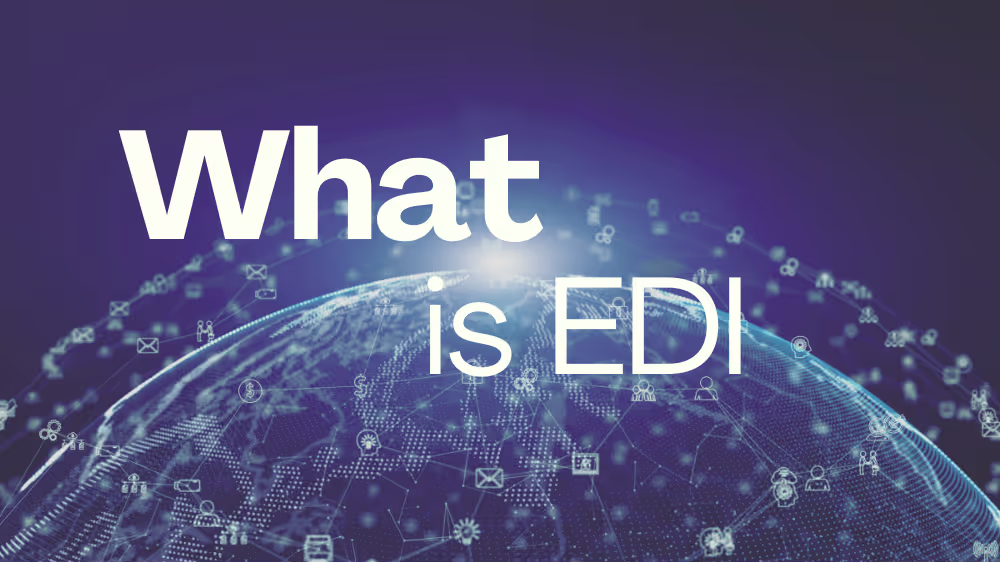What is EDI
This guide explains what Electronic Data Interchange is and how you can get started with EDI.

What is EDI?
EDI is an abbreviation for Electronic Data Interchange (EDI). It is a digital communication method that allows information systems to exchange structured business documents without human intervention. For many wholesalers and brands, retail is an important sales channel. Retailers around the world often require that the entire Order-to-Cash (O2C) process is handled via EDI. In fact, EDI is a strict requirement for suppliers in most retail environments.
How did EDI come about?
EDI was developed in the 1960s to enable computers to exchange information directly. Instead of relying on paper documents, companies began using electronic messages that could be processed automatically by systems. Practically any business document, whether an invoice, packing slip (dispatch advice) or order, can be converted into an EDI message. By using EDI, the process of sending and receiving documents becomes faster, more efficient and less prone to error.
What is an EDI message?
An EDI message is a structured electronic document used to exchange business information between companies. These messages are transmitted from one system to another and processed automatically, without manual input. This saves time and ensures consistency and reliability in your business communications.
What do you need to start with EDI?
To communicate via EDI, you typically use the GS1 standard. This requires a Global Location Number (GLN). Both you and your trading partners use this number to identify your companies in the supply chain. Products are identified with a Global Trade Item Number (GTIN), also known as an EAN code.
Through the T2S EDI Platform, you can exchange EDI messages with your trading partners, including both upstream suppliers and downstream retailers. The platform handles the translation and routing of these messages to the correct recipients.
Commonly used EDI message types
In the logistics chain, the following EDI messages are commonly used:
- ORDERS, purchase order
- APERAK, receipt confirmation
- ORDERSP, purchase order response
- DESADV / ASN, dispatch advice or Advance Shipping Notice
- INVOIC, invoice
- RECADV, receipt advice, confirmation of goods received by a third party
- INVRPT, inventory report, stock updates from a third-party warehouse
What are the different EDI message formats?
EDI messages come in different message formats. Some message formats are industry specific; others are more general. Besides the standard EDI and EDIFACT messages, EDI messages are also send in XML or JSON format.
Benefits of EDI
Using EDI offers numerous benefits:
- Faster exchange of information
- Lower risk of errors
- 24/7 availability
- Better service levels
- Cost reduction
PEPPOL
Some retailers, especially in Europe, prefer or require EDI via the PEPPOL network, a secure international framework for e-invoicing and procurement. We fully support PEPPOL as well.
Integration with your ERP system
For integration with your ERP system, we collaborate with specialized partners. If you have any questions about EDI implementation or ERP integration, please feel free to contact us.
What is Peppol?
Learn what Peppol is and how it simplifies electronic document exchange between businesses.

